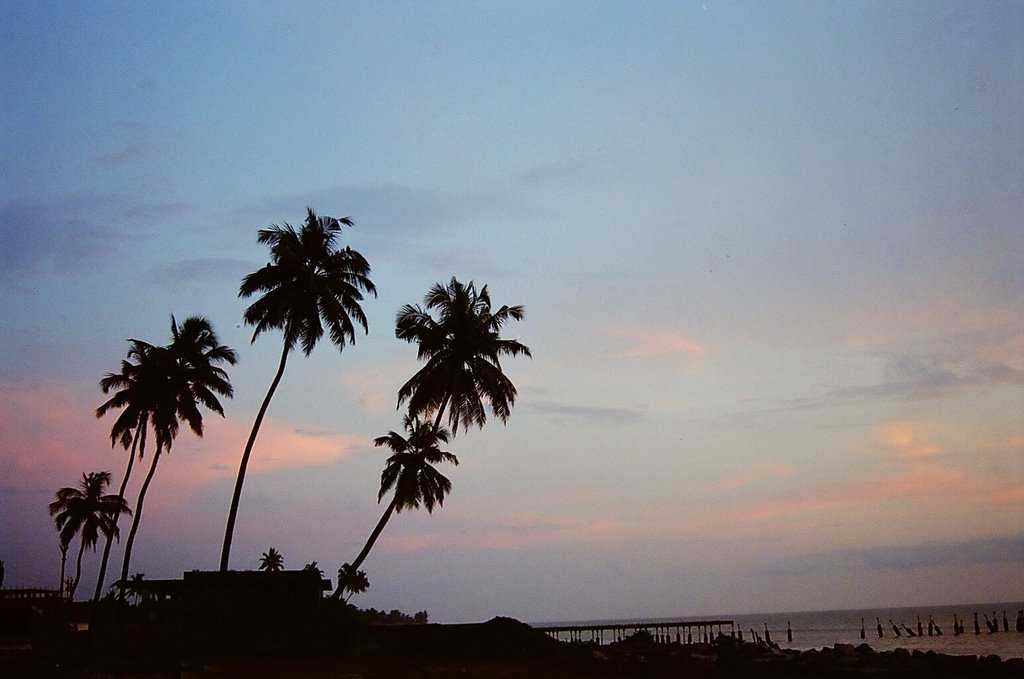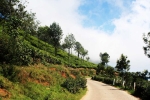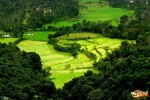"A colonial city of trade and tourism"
Kozhikode Tourism
Formerly known as Calicut, Kozhikode was the Capital of Malabar during the Zamorin rule 500 years ago and is famous for its centuries old trade in cotton and spices with Jews, Arabs, Phoenicians and Chinese.
Vasco da Gama had set his foot on the remote beach of Kappad in Kozhikode in 1498 and 'Discovered India' and established trade routes with the west. Kozhikode city continues to be a centre of flourishing domestic and international trade. Its contribution to all round development of the district in trade, commerce and economic development over the years is spectacular. Kozhikode city is the marketing centre for commodities like pepper coconut, coffee, rubber, lemongrass oil etc., produced in Kozhikode and the neighbouring districts of Wayanad, Malappuram and Kannur. Basking in the idyllic setting of the serene Arabian Sea on the west and the proud peaks of the Wayanad hills on the east, this district with the serene beaches, lush green countryside, historic sites, all combine to make Kozhikode a popular tourist destination filled with a warm ambience to fascinate a visitor.
Download Kozhikode PDF Guide >
What's Great?
Great cuisine. Pleasant weather throughout the year.
What's not so Great?
Highly congested. Transport system is not very efficient .
For Whom
Kozhikode is ideal for people looking to experience a complete holiday package of shopping, sightseeing and relaxing.
History of Kozhikode
Originally being part of Madras state (Tamil Nadu), Kozhikode was later added to Kerala based on linguistics. Physiography under the hegemonic rule of Zamorins or Samuthiris contributed to various socio-political changes in this region. The prosperity of Kozhikode was at its zenith under the administration of Zamorins. Located to the right bank of river Kallayi in the South-West coast of India this district is bounded by Nilgiris and Wayanad Hills in the East.
Vikramapuram, the original name of Kozhikode was later changed to Kozhikode under the rule of Zamorins. There have been a lot of folk stories about this transition of the name of the district. But it is mostly believed to have got its name from the fortified palace of Zamorins- ?Kozhikottu?. Later, Kozhikode was anglicized to Calicut, as the district is famous for its unique ?Calicut cotton? and Calico cloths.
In the year 1498, Vasco da Gama arrived in the city of Kappad of Kozhikode and this kindled the bilateral trade relationship with Portuguese. Kozhikode became the hot trade centre in Malabar in trading pepper and other spices with Arabs, Chinese and Portuguese. In the memoirs of foreign travellers, they used to state that merchants from all parts of the world are found in the ports of Kozhikode. Kozhikode was also the prime reason for the four Anglo-Mysore war 1766 between Hyder Ali of Mysore and the British.
Culture of Kozhikode
Being the major trade centre in Malabar, Kozhikode exported coconut oil, nuts, gingelly, cardamoms, pepper, cinnamon, myrobalans, zedoary etc. to foreign countries and so, the international travellers christened this district as ?the noble emporium of India?. Embraced by the plains of the mighty Western Ghats, the district thrones two important hill stations- Pervannamuzhy and Kuttiady. Experiencing a stable tropical maritime climate, Kozhikode is praised for its thick groves of coconut trees. Moreover, this district has been receiving extra attention after the historical visit of Vasco da Gama in 1498.
The hegemonic rule of Zamorins and the colonial rule of Portuguese, Dutch and British have contributed to the local adaptation of western ideals. This hybrid modernity is one its special feature which contributes to the existence of multi-ethnicities and multi religions. Kozhikode is famous for its co-existence among all forms of religious faith. Mappilas, the Muslims residing in Kozhikode, have played a significant role in shaping the socio-political ideas of this district. They celebrate ?Malabar Mahotsavam? in January to cherish and revive the culture and tradition of past by hosting various trade fairs, exhibitions, classical and folk arts.
The City of Spices
During the colonial and pre-colonial times, the city was top ranked in spice production and trade. A huge variety of premium quality spices is sold here even today. A mercantile city since the ancient times, Kozhikode
is a metro with lots of shopping and dining options. The city also has a few beautiful places of worship
and is located close to the stunning Tusharagiri waterfalls.
Itinerary
Day 1 - Reach Kozhikode by morning. Sample an authentic Kerala style breakfast. Visit Kappad Beach and then the Tali temple. Check out the shopping areas in the evening.
Day 2 -Visit the Beypore beach. Make sure to check out Sargaalaya Handicrafts village. Then, visit the Tusharagiri Waterfalls. Wind up the trip with a bit of shopping at S.M street.
Oct-Maris the best time to visit Kozhikode
October-March is the best time to visit Kozhikode. The weather is pleasant during these months. Summers (April-June) are quite hot and Monsoons (July-September) are hot and humid.
Weather in Kozhikode
Loading...
Kozhikode in Summer (March - May)
During the summer season the days are extremely sultry, but nights are pleasant. It is considered to be the off season for tourists.
Kozhikode in Monsoon (June - October)
This is the time of the harvest festival. The city is at its cultural best during this time. However, the region experiences heavy rainfall during this time and is not recommended for a visit.
Kozhikode in Winter (November - February)
The weather is at its best during the winters. It is the peak tourist season.
Monthly Weather in Kozhikode
Month
Avg. Minimum (°C)
Avg. Maximum (°C)
January
23
34
February
23
35
March
25
35
April
27
35
May
26
34
June
25
31
July
24
31
August
24
31
September
24
31
October
24
33
November
24
33
December
22
33
Comments on Kozhikode
Post Your Comment


 Backwaters
Backwaters Kozhippara Falls
Kozhippara Falls Thusharagiri Waterfall
Thusharagiri Waterfall Thikkoti Light House
Thikkoti Light House Wayanad
Wayanad Ooty
Ooty Coorg
Coorg Malappuram
Malappuram Nilambur
Nilambur Kalpetta
Kalpetta